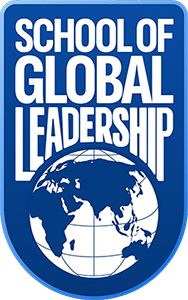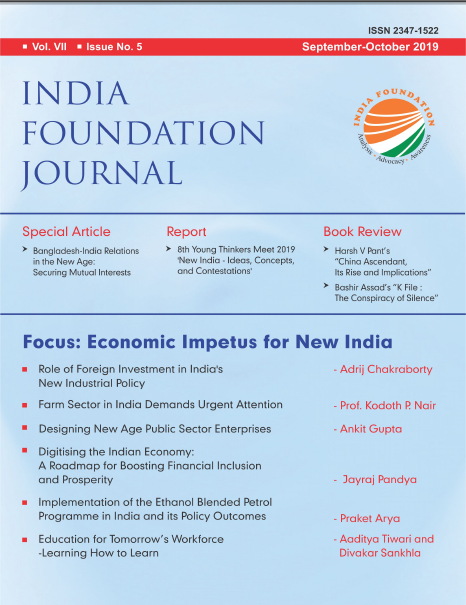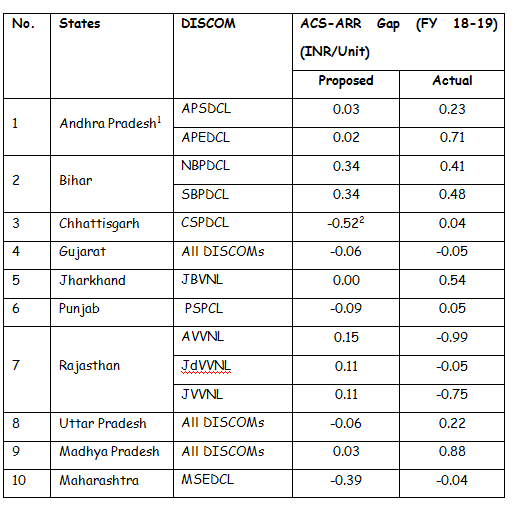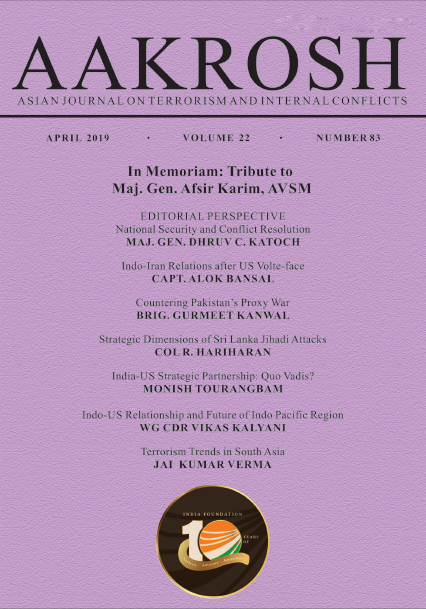The Ethanol Blended Petrol (EBP) Programme was launched in India in January 2003 with an aim to promote the use of alternative and environmentally friendly fuels that reduce import dependency for energy requirements. Moreover, it had the ability to help sick, non performing sugar mills stuck in a rut of over production and globally saturated sugar prices, which in turn could help clear long pending cane payments to farmers. Another important criterion for introducing the EBP Programme in India was India’s commitment to reduce its carbon footprint in accordance with various international climate treaties. Hence, when initiated, this programme had the unique potential to affect more than one sector of the country’s economy, i.e., from agriculture to manufacturing and to other overarching pillars of environment, self-sufficiency and forex savings. It was also believed that it could help under recovering public sector undertakings in the oil and gas sector. If executed correctly, this programme would not only give a much needed boost to the industry and the value addition chain, but also directly to the farmer in terms of timely payments and the final consumer who could end up paying up to Rupees 3 per litre less for petrol1.
Ethanol is usually produced from sugarcane molasses, cane juice, maize, wheat and other grains having a high starch content. The science behind blending ethanol with petrol is that since the ethanol molecule contains oxygen, it allows the engine to more completely combust the fuel, resulting in fewer emissions of carbon monoxide and carbon dioxide by up to 30 percent. Moreover, it cleans the dirt from the engine’s pipes and chamberswhilealsoacting as an anti-knockingagentwhich reduces engineknocking. Comparedtoonlypetrol, ethanolblendedpetrolburnscleaner, therebyreducingtheoccurrence of environmentalpollution and sinceitisproducedfromplantsthatharnessthepower of thesun, ethanolisclassified as a renewablebio fuel2. Ethanol blended fuel is widely used in Brazil, USA and Europe, where cars run on blends of upwards of 10 percent. In fact, Brazil, a world leader in ethanol blended fuel since 1976, today has a legal blend ratio of around 25 percent ethanol and 75 percent gasoline3. India started its experiment with ethanol blended fuel in 2001, and today has a blend ratio of 6.20 percent (as of June 2019), a quantum leap forward from 0.67 percent in 2012-13, 1.53 percent in 2013-14, 2.33 percent in 2014-15, 3.51 percent in 2015-16, and 4.22 percent in 2017-184. Growing steadily, the target as highlighted in the new National Policy on Biofuels 2018 of the government is to achieve 10 percent ethanol blending with petrol by 2022 and 20 percent blending by 20305. To ensure the success of this policy the Government of India has recently initiated a variety of reforms so as to encourage sugar mills and distilleries to produce more ethanol. With better coordination among the OMCs (oil marketing companies), soft loans for capacity building, construction of distillation units for sugar mills and the growing investor interest in standalone ethanol distilleries, the annual ethanol production capacity is expected to grow from the current 3550 million litres to 6000-7000 million litres in the next three years6. However, even with this doubled capacity, the quantity of ethanol required to meet the target of 2022 would still fall short by a substantial margin. The larger question, therefore, is whether we can augment our production capabilities to the required level, and in doing so what other policy changes would have to be brought about so as to protect the interest of the farmers, manage the available food stock, given ample time to the auto industry to incorporate minor changes to the fuel delivery system in the engine and also be considerate of any environmental challenges.
Evolution of Ethanol Blended Fuel in India
Pilot projects and testing on EBP began in India in 2001 at three locations before the EBP Programme was officially launched in 2003 as part of the National Auto Fuel Policy 2003 that mandated 5 percent ethanol blending for retailers selling petrol in 9 States and 4 Union Territories on a trial basis. Later on, in November 2006, this programme was rolled out for the entire country (barring Jammu & Kashmir and a few North Eastern States)7. It was estimated then that at 5 percent blending, India could reduce its import dependency of crude oil by up to 1.8 million barrels per annum8. However, during this time, the OMCs could only manage to blend less than 0.2 percent ethanol with petrol9. This was due to a number of factors:
● Firstly, oil companies have to store ethanol separately from petrol and blend it only before giving it to the retailer in the market. It took some amount of time before the OMCs were able build tanks to store ethanol at all the oil depots so as to increase their ethanol storage capacities.
● Secondly, the Central Government realised that not all State Governments were fully on board as some of the States, despite not having the legislative authority to do so, were charging interstate import and export fees for ethanol, which was making the process not feasible for the OMCs and other standalone distilleries. It took a couple of years, a few court cases and persuasion from the Centre to finally get the State Governments on board.
● Third, there was simply not enough production capacity in the country to meet the demand nor enough feed stock. OMCs were not able to get bids for more than 50 percent of the amount offered for purchase10.
● Fourth, despite there being an ever rising demand from OMCs it was simply not profitable for sugar mills and distilleries to divert molasses from manufacturing sugar (in the case of mills) or potable alcohol (in the case of distilleries) to manufacturing ethanol. Sugar (and in extension, molasses), being an essential commodity and an important cash crop from the point of view of farmers on which millions depend for their sustenance, has always had its price regulated, controlled and fixed by the government from season to season. With respect to ethanol, there was no such mechanism in place and therefore, mills diverting to ethanol were unable to compensate their revenue that they would have made from sugar or potable alcohol. Moreover, it was also not possible to link the price of ethanol to sugar, which as mentioned above, kept fluctuating because of political compulsions and the need to provide sugarcane farmers a fair and remunerative price for their produce.
● Lastly, in 2012 and 2013, two government notifications further aggravated the situation. A 2012 government notification directed that the procurement price of ethanol would be decided mutually by the OMCs and ethanol producing distilleries and then in July 2013 it was mandated that OMCs could only procure ethanol from domestic sources. In effect, this caused the price of ethanol to rise steeply, which eroded the economic feasibility of the EBP Programme11.
As a consequence, mills were unable to plan their ethanol production nor were oil companies able to finalise long term tenders with the distilleries. Thus, after its inception in 2001/2003, the EBP programme, in the years between 2004 and 2014 did not take off as expected, nor did it have the overarching, inter sectoral benefits as envisaged by policy makers. In order to understand why this policy failed initially it is important to understand that in this chain of production starting from the sugarcane farmers to sugar mills to ethanol distilleries to OMCs and retailers (not to forget the role of Central and State Governments, transporters and the auto industry), the Government of the day was not able to identify the key stakeholder,so as to first address and strengthen the weakest link in the chain in order to setup a well-functioning upstream and downstream chain. In India, ethanol is mostly made from B-Heavy molasses, which is a byproduct of sugar refining, an industry which for innumerable reasons has been struggling and non-performing. In spite of India being the second largest producer and the largest consumer of sugar in the world12, sugar mills have been unable to be profitable over the last many years and as a result, the burden has been passed onto the sugarcane farmers, who at the start of 2014 had unpaid dues of upwards of ₹60,000 crore and payments delayed by an average of one to two years13. The unrest this caused in the very social fabric of the agriculture sector, especially in the sugarcane growing regions of western Uttar Pradesh, Karnataka and Maharashtra, was a cause of great worry. Many sugar mills were shutting down or declaring bankruptcy14. Farm incomes were not rising, there wasn’t enough cyclical money for farmers to buy seeds and implements for the next season and as sugarcane farmers started borrowing more (from formal as well as informal sources) without having the ability to pay back, many started getting stuck in debt traps. So much so, that in many sugarcane growing belts, hundreds of farmers were forced to cancel or reschedule weddings in their families and worst still, many others committed suicide15. The situation had come to a flashpoint wherein it was perhaps one major incident away from being a serious law and order problem which could cause widespread civic unrest.
In 2014, when the newly formed NDA government came to power, tackling this situation was one of their main concerns and an important poll promise that it had to deliver on. Many schemes were initiated so as to give an impetus to the sugar industry. Soft loans were provided to non performing mills and in many instances the government tried to lessen the load on sugar mills by directly transferring some amount of unpaid dues to the farmer’s bank accounts16. Meanwhile, State governments, universities and NGOs working in the farm sector tried to incentivise and increase awareness among farmers about the advantages of shifting from sugarcane to other crops, as a more diversified farm produce had better chances of recovering previous losses. However, due to sugarcane being a sturdy crop, that was able to thrive against many diseases and wild animals, apart from not being very labor intensive, these efforts had few takers. During this time, the government, in an emergency measure, increased the import duties on sugar to 100 percent and incentivised export by scrapping export duties of 20 percent to liquidate the excess sugar in the market17. A few other minor efforts were made at the State government level to further reduce the burden of non performing sugar mills being passed onto farmers. Expert groups also started exploring the possibility and advantages that could be derived from making sugar a differentially priced product, where the sale price of sugar would be determined by its end use. None of the above measures, however, were able to target the problem at its source i.e. the nonperformance of sugar mills. These steps, being more curative at the surface rather than surgical in nature, were unable to give the mills the economic push it needed to come out of its dire circumstances. It was under these conditions that the EBP Programme was re-looked at and an attempt was made to understand why this policy had failed to give the desired impetus to all its associated sectors.
Price Fixation and EBP Programme 2.0
It was realised over time that in the absence of a price fixation mechanism for ethanol (separate from linking the price of ethanol to sugar), it was simply not profitable for mills to produce ethanol or invest in building capacities for installation of distillation units. Moreover, some policy experts were of the opinion that the OMCs had a certain vested interest in not allowing the EBP Programmed to take off, as a rise in production capacities of domestically manufactured ethanol would eat into their profit margins as compared to when OMCs were importing ethanol for the same. In December 2014, it was decided to approach this problem in a threefold manner. First, to fix a remunerative price for procurement of ethanol based on distance and later on based on raw material utilised for production of said ethanol; two, to provide support to sugar mills and standalone distilleries to augment their production capabilities where they existed and create new ones where they didn’t18. Lastly, it was decided that a new policy on biofuels must be drafted by the Ministry of Petroleum and Natural Gas so as to create a blueprint for taking this policy into the future.
Thus, on 10 December 2014, in order to improve the availability of ethanol, the Government of India fixed the price of ethanol in the range of ₹48.5 to ₹49.5 based upon the distance of the distillery from the oil depots of the OMCs19. These rates, which were inclusive of all central and state levies, including transportation costs borne by the ethanol producers, encouraged movement of ethanol over longer distances and to states that did not possess distillation capabilities. Moreover, once this price was arrived at, it became profitable for ethanol distilleries to sell their produce to the OMCs. Next, the Central Government amended the Industries (Development and Regulation) Act, 1951 in 2016, which gave it complete control over production, movement and storage of ethanol20. The Central Government now had the power to implement a common EBP Programme in the entire country in consultation with the State Governments and other stakeholders. The government now started providing loans to sugar mills at subsidised rates (6 percent interest subsidy) for building ethanol distillation capacities through the Department of Food and Public Distribution. This scheme aimed to infuse ₹1332 crore for the same via the interest subvention route21. The scrutiny for meeting environmental regulations by existing sugar mills that wanted to set up distillation units was also simplified and fast tracked. The next major policy revamp came in 2018, when the Cabinet Committee on Economic Affairs fixed the remunerative price for ethanol based on the kind of raw material utilised for production of ethanol. Different prices were fixed for ethanol produced from C-Heavy molasses (₹43.46 per litre), B-Heavy molasses or partial sugarcane juice (₹52.43 per litre) and that from mills which would a 100 percent divert their sugarcane juice for the production of ethanol and thereby not produce any sugar (₹59.19 per litre). Similarly, the government also allowed and fixed the price of ethanol produced from damaged food grains at ₹47.13 per litre22. These rates, coupled with a reduction in the GST rates for ethanol for the EBP Programme from 18 percent to 5 percent23, suddenly made the manufacture of ethanol one of the most lucrative businesses in the country where profit margins reached around the 20 percent mark24, a level which is quite unimaginable in any economic venture of the day. To safeguard the interests of farmers and consumers of sugar (as an essential commodity), concessional loans for ethanol capacity building were only given to those sugar mills that had not defaulted on any previous government dues. Moreover, it was also mandated that mills met their levy sugar supply (the amount of sugar set aside from the total production for the Public Distribution System)25. During the same time, the Ministry of Petroleum and Natural Gas came out with a revised version of the National Policy on Biofuels. As part of this policy, ethanol produced from other non-food feedstock besides molasses, like cellulosic and ligno cellulosic materials including the petrochemical route, were allowed to be procured subject to meeting the relevant Bureau of Indian Standards (BIS) specifications. Similarly, another set of feedstock in the form of surplus food grains, corn, rotten potatoes etc. were allowed to be used for producing ethanol. Another important aspect of this policy was the vision of setting up second generation (2G) biofuel refineries that would be technologically superior and environmentally cleaner. Lastly, it increased the scope for commercialisation of biofuels by also introducing the concept of blending biodiesel in diesel through a biodiesel blending programme and similarly for bio-CNG, bio-methanol, bio-hydrogen and even bio-jet fuel etc. The major thrust of this policy was to ensure the availability of biofuels from an indigenous feedstock. A National Biomass Repository was created for the same to conduct an appraisal of biomass across the country26.
A Panacea for Sugarcane Farmers?
The introduction of this refined EBP programme has been most beneficial to the sugar mills and by extension,to the sugarcane farmers. There is an ever increasing demand for ethanol that can only be met by increasing the area under cultivation for sugarcane. Once all the mills setup ethanol distilling capabilities, they would turn over a new leaf and slowly start becoming profitable to run, which in turn, would allow them to make timely payments to cane farmers. Moreover, even if the sugar mills do not directly produce ethanol, the excess molasses they have to store, which eventually would spoil and rot owing to a limited shelf life of 6-7 months27, could now be sold to other standalone distilleries which would depend on them for their raw material in order to produce ethanol. By focusing on the weakest link in the chain, and removing hurdles for the development of sugar mills, the revamped EBP programme gives new life and a new future perspective to sugarcane farmers. It is important to understand here that the number of farmers growing sugarcane is not going to reduce anytime soon as farmers won’t leave growing sugarcane unless the distortion in the farm economy between sugarcane and other crops is corrected, or that gap is reduced. The challenge today for the farm sector is not the lack or inadequacy of food supply as India is today a surplus food producing country28. It is to get farmers the price they were promised, which is fair and sustainable for all stakeholders concerned. The EBP programme is an important step in that direction that has the potential to make sugarcane farming an attractive sector for large scale commercial farming, using modern tools and processes.
Challenges
There are a few challenges that remain for this programme to realise its full potential. Firstly, a few hurdles that prevent new companies from setting up standalone distilleries need to be addressed. It would not be possible to meet the required demand for ethanol with only the existing sugar mills that have distillation units or those that are building one. Entry into the market for new companies is difficult owing to a number of reasons. To begin with, companies must first submit their intent to setup a distillery to the State excise department (as alcohol and licensing for the same falls under the ambit of State Governments). Following this, they must separately take permission from Central Pollution Control Board (falling under the ambit of the Central Government) as distilleries are classified as ‘red’ industries, i.e., industries that cause maximum pollution. The process to obtain a NOC from the Pollution Control Board is a long and tedious one that takes upwards of 12-14 months if everything goes according to plan (owing to various public hearings that must be conducted at the site of the proposed distillery with local stakeholders). During this time, the company or individual is not allowed to start any work whatsoever, including civil work or building a boundary for the compound. As a result, it is only existing business houses that are able to take the risk of investing in a large plot of land without any guarantee that it would be approved by both the State and Central governments, not to mention the existence of rampant corruption in the excise departments of most states. Although, these systems are rightly in place to ensure that only compliant and environmentally conscious proprietors enter the industry, in effect it discourages new ventures for the same. Similarly, as more and more sugar mills build capacities to produce ethanol, there is predicted to be a serious shortage of molasses in the future29, the raw material required by standalone distilleries to function. Most mills would use up their own raw material and would not want to sell it to other competitors. Although, standalone distilleries may start using grains or other approved feedstock to produce ethanol in the future, in the present as there is no fixed price of procurement for ethanol produced from sources other than molasses and sugarcane juice, it is simply not feasible for them to function. One must also note at this point that the manufacture of ethanol from grains or sugarcane juice requires a slightly different technology which at present is at a very nascent stage in India and most don’t have access to the knowhow of doing the same.
From the point of view of the environment, a higher blend of EBP can cause a serious strain on the country’s water resources. To produce one litre of ethanol, more than 2500 litres of water is required30. This includes the rainwater at the root zone of ethanol producing plants like sugarcane, surface and ground water and fresh water to wash away pollutants.
The following table represents the amount of water footprint required by USA, Brazil and India in producing one litre of ethanol from their respective main feedstock:
[Source: M.M. Mekonnen & A.Y. Hoekstra, “The green, blue and grey water footprint of crops and derived crop products, Hydrology and Earth System Sciences, 15(5): 1577-1600”, Water Footprint Network, 2011.]
Here, India’s water footprint is not only higher than Brazil and the USA, but it also uses a far greater amount of surface and groundwater, which is the main source of water for the population’s daily requirements. This situation is further compounded by the fact that India’s groundwater level has been plummeting to dangerously low levels in recent years. Many areas around the NCR have already been classified as ‘red zones’31, meaning that the groundwater level there is so low that it must only be extracted for personal use and no commercial use whatsoever. To further understand the gravity of the problem, one must also consider that the level of blending in both the USA and Brazil (in double digits) was much higher than in India (approximately 0.5 percent) in 2011. If India is to achieve 20 percent, or even 10 percent blending by 2022, it needs to first very seriously address this problem and decrease its water usage through better irrigation practices.
Another important issue that will need to be addressed for the EBP to sustain itself in the future, is the way India will have to change its land use so as to increase the acreage for sugarcane production. At present, sugarcane only accounts for 3 percent of India’s net sown area32. Consider the following graph:
Net sown area for India for this analysis was taken as the average of the net sown area from 2010-11 to 2013-14 (Source: ‘Agriculture Statistics at a Glance 2016’ – Ministry of Agriculture And Farmers Welfare). Yield of sugarcane and molasses obtained per tonne of sugarcane was approximated for each calendar year to the sugar year beginning in the year before that. A tonne of molasses was assumed to produce 250 million litres of ethanol, as reported by ISMA to Standing Committee on Petroleum & Natural Gas.
[Source: Indian Sugar Mills Association (ISMA), Ministry of Agri& Farmers Welfare]
Here, we can see that based on a calculation of the extra area required for the 2010 to 2017 period, if India is to achieve a 10 percent blend ratio, it will have to bring in another 4 percent of its net sown area for sugarcane on top of the existing area. At 20 percent blends, this number rises to almost 10 percent. In effect, this would mean that one-tenth of the existing net sown area should be diverted for sugarcane production, which may put stress on other crops and has the potential to cause food prices to rise. It is therefore imperative that we make concentrated efforts to increase the sugarcane yield per acre through the use of modern farm practices.
Future Prospects
The EBP Programme is set to witness a major upward trajectory in the next few years to come and will be watched closely by policy enthusiasts and academics. In the current season (December 2018 – November 2019), India is already poised to achieve a record breaking 7.2 percent ethanol blending with petrol, well on track to meet its target of 10 percent in 202233. Although, there are a few serious environmental concerns that tarnish the EBP’s image as a source of clean fuel, these can be addressed in the coming months and years. From the point of view of auto companies, no major changes need to be made to car engines as we move from 5 to 10 percent blending and beyond. Only certain small parts of the engine (particularly rubber parts) have their lives reduced by 3 to 5 years (considering an average life cycle to be 20 years). These can be easily replaced and do not cost much. However, not all auto companies are convinced of the same and it will be some time before they are brought into the fold. Once the auto companies jump on the clean fuel bandwagon, we can expect to see a rise in flexible fuel vehicles being sold in India. These flex-fuel automobiles have the ability to run on more than one fuel, usually gasoline blended with either ethanol or methanol fuel, and both fuels are stored in the same common tank. One must also consider what sort of effect there will be on blended fuel processes with an impending global electric car boom. Although, many are of the opinion that electric vehicles would not be able to meet the entire demand and particularly with India, it is believed that the entry of practical and cost effective electric vehicles will be much later than in the rest of the world owing to a lack of necessary infrastructure support. However, regardless of the future scope of ethanol blended fuel in the world, it has come to India at a most opportune moment where there is great scope of advancement for businesses and farmers alike. Moreover, the lessons learnt from the implementation of this policy will be the prism through which we look at other future technologies as we further advance into the 21st century.
(*Praket Arya is a Senior Research Fellow at India Foundation. An economist by education, he is an alumnus of The University of Edinburgh, Scotland, and St. Xavier’s College, Mumbai. His research interests include Development Economics and the International Political Economy of the European Union and the Greater Eurasian Space.)
References:
1 Twesh Mishra, “10% ethanol blending with petrol can lower fuel price by ₹3/litre: Experts”, The Hindu Business Line, https://www.thehindubusinessline.com/economy/10-ethanol-blending-with-petrol-can-lower-fuel-price-by-3litre-experts/article25208320.ece, October 12, 2018.
2For details, see United Nations Environment Programme, “Towards Sustainable Production and Use of Resources: Assessing Bio fuels” ,https://web.archive.org/web/20091122133933/http://www.unep.fr/scp/rpanel/pdf/Assessing_Biofuels_Full_Report.pdf, October 16, 2009.
3For details, see Worldwatch Institute, “The Renewable Path to Energy Security”, https://images1.americanprogress.org/il80web20037/americanenergynow/AmericanEnergy.pdf, September 2006.
4Sanjeev Choudhary, “Ethanol blending in petrol rises to record 6.2%”, The Economic Times, https://economictimes.indiatimes.com/industry/energy/oil-gas/ethanol-blending-in-petrol-rises-to-record-6-2/articleshow/69962324.cms?from=mdr, June 26, 2019.
5 For details, see Ministry of Petroleum and Natural Gas Notification, “National Policy on Biofuels – 2018”, http://petroleum.nic.in/sites/default/files/biofuelpolicy2018_1.pdf, June 04, 2018.
6Dilip Kumar Jha, “India to achieve 7.2% of ethanol blending with petrol this season”, Business Standard, https://www.business-standard.com/article/economy-policy/india-to-achieve-7-2-of-ethanol-blending-with-petrol-this-season-119040300816_1.html, April 03, 2019.
7 For details, see Government of India, Report of the Expert Committee, “Auto fuel vision and policy 2025”, May 2014.
8Ibid.
9Government of India, Ministry of Consumer Affairs, Food & Public Distribution, “LokSabhaUnstarred Question 1652”, https://indiansugar.com/PDFS/ETHANOL_PRODUCTION.pdf, December 04, 2012.
10Government of India, Ministry of Consumer Affairs, Food & Public Distribution, “Lok Sabha Unstarred Question”, https://indiansugar.com/PDFS/ETHANOL_PRICING.docx, August 28, 2012.
11RajalakshmiNirmal, “Ethanol-blended petrol is a sweet deal”, The Hindu Business Line, https://www.thehindubusinessline.com/portfolio/commodity-analysis/ethanol-blended-petrol-is-a-sweet-deal/article26625076.ece, March 24, 2019.
12For details, see Deokate Tai Balasaheb, “India’s sugar trade: A fresh look”, Indira Gandhi Institute of Development Research, Mumbai, http://www.igidr.ac.in/pdf/publication/WP-2013-024.pdf, November 2013.
13 Government of India, Ministry of Consumer Affairs, Food & Public Distribution, “Lok Sabha Unstarred Question”, https://www.indiansugar.com/PDFS/SUGARCANE_ARREARS.pdf, March 28, 2017.
14PTI Muzaffarnagar, “Ten sugar mills to close operations in UP”, The Hindu Business Line, https://www.thehindubusinessline.com/economy/agri-business/Ten-sugar-mills-to-close-operations-in-UP/article20601386.ece, April 12, 2013.
15 Piyush Srivastava, “Debt-ridden Uttar Pradesh farmers reschedule weddings due to stalemate over sugarcane pricing”, India Today Group, https://www.indiatoday.in/india/north/story/stalemate-over-sugarcane-pricing-hits-debt-ridden-uttar-pradesh-farmers-in-wedding-season-219821-2013-12-06, December 06, 2013.
16 Aman Sharma, “After PM Modi mentions cane dues of Rs 10,000 cr in west UP, Yogi govt to clear half the dues by April 5”, The Economic Times, https://economictimes.indiatimes.com/news/elections/lok-sabha/uttar-pradesh/after-pm-modi-mentions-cane-dues-of-rs-10000-cr-in-west-up-yogi-govt-to-clear-half-the-dues-by-april-5/articleshow/68640580.cms, March 30, 2019.
17 PTI, “Government to consider hike in sugar import duty, cut export duty”, The Economic Times, https://economictimes.indiatimes.com/news/economy/policy/government-to-consider-hike-in-sugar-import-duty-cut-export-duty/articleshow/62557731.cms?from=mdr, January 18, 2018.
18Government of India, Ministry of Petroleum and Natural Gas, “Lok Sabha Unstarred Question”, https://indiansugar.com/PDFS/ETHANOL_BLENDING-_LS.pdf, March 05, 2018.
19The Hindu Business Line Bureau, “CCEA approves pricing mechanism for ethanol procurement by OMCs”, https://www.thehindubusinessline.com/news/CCEA-approves-pricing-mechanism-for-ethanol-procurement-by-OMCs/article20928467.ece, December 11, 2014.
20For details, see The Industries (Development and Regulation) Amendment Bill, 2015, http://www.prsindia.org/billtrack/the-industries-development-and-regulation-amendment-bill-2015-4087, May 10, 2016.
21Ibid.
22For details, see Cabinet Committee on Economic Affairs Notification, Press Information Bureau, Government of India, http://pib.gov.in/newsite/PrintRelease.aspx?relid=180220, June 27, 2018.
23 Twesh Mishra, “A GST boost for alternative fuels”, The Hindu Business Line, 23 https://www.thehindubusinessline.com/economy/policy/a-gst-boost-for-alternative-fuels/article24489001.ece, July 22, 2018.
24YashUpadhyaya, “Ethanol Begins To Cushion Sugar Makers Amid Supply Glut”, Bloomberg Quint, https://www.bloombergquint.com/business/ethanol-begins-to-cushion-sugar-makers-amid-supply-glut#gs.4ON346XN, February 07, 2019.
Government of India, Ministry of Consumer Affairs, Food & Public Distribution,
25 “LokSabhaUnstarred Question 2773”, https://indiansugar.com/PDFS/Ethanol_Pricing-LS.pdf, March 15, 2016.
26Ibid.
27Ibid.
28T N Ninan, “What’s behind India’s food mountains and the widening problem of plenty?”, The Business Standard, https://www.business-standard.com/article/opinion/what-s-behind-india-s-food-mountains-and-the-widening-problem-of-plenty-118072000342_1.html, July 20, 2018.
29Virendra Singh Rawat, “After sugar, glut in molasses churns a bitter brew for mills in UP”, The Business Standard, https://www.business-standard.com/article/markets/after-sugar-glut-in-molasses-churns-a-bitter-brew-for-mills-in-up-118052200406_1.html, May 24, 2018.
30 AbhishekJha, “Why ethanol blending in petrol might not work for India”, The Live Mint, https://www.livemint.com/Industry/RfNU5ZFXDRTrfUkl9lNMaL/Why-ethanol-blending-in-petrol-might-not-work-for-India.html, September 04, 2018.
31 For details, see Central Ground Water Board, “Ground Water Year Book 2015-2016”, http://cgwb.gov.in/Regions/GW-year-Books/GWYB-2015-16/GWYB%20Delhi%202015-16.pdf, September 2016.
32 For details, see Government of India, Ministry of Agriculture and Farmers Welfare, Directorate of Economics and Statistics, “Agriculture Statistics at a glance 2016”, https://eands.dacnet.nic.in/PDF/Glance-2016.pdf, March 2017.
33 Ibid.




















